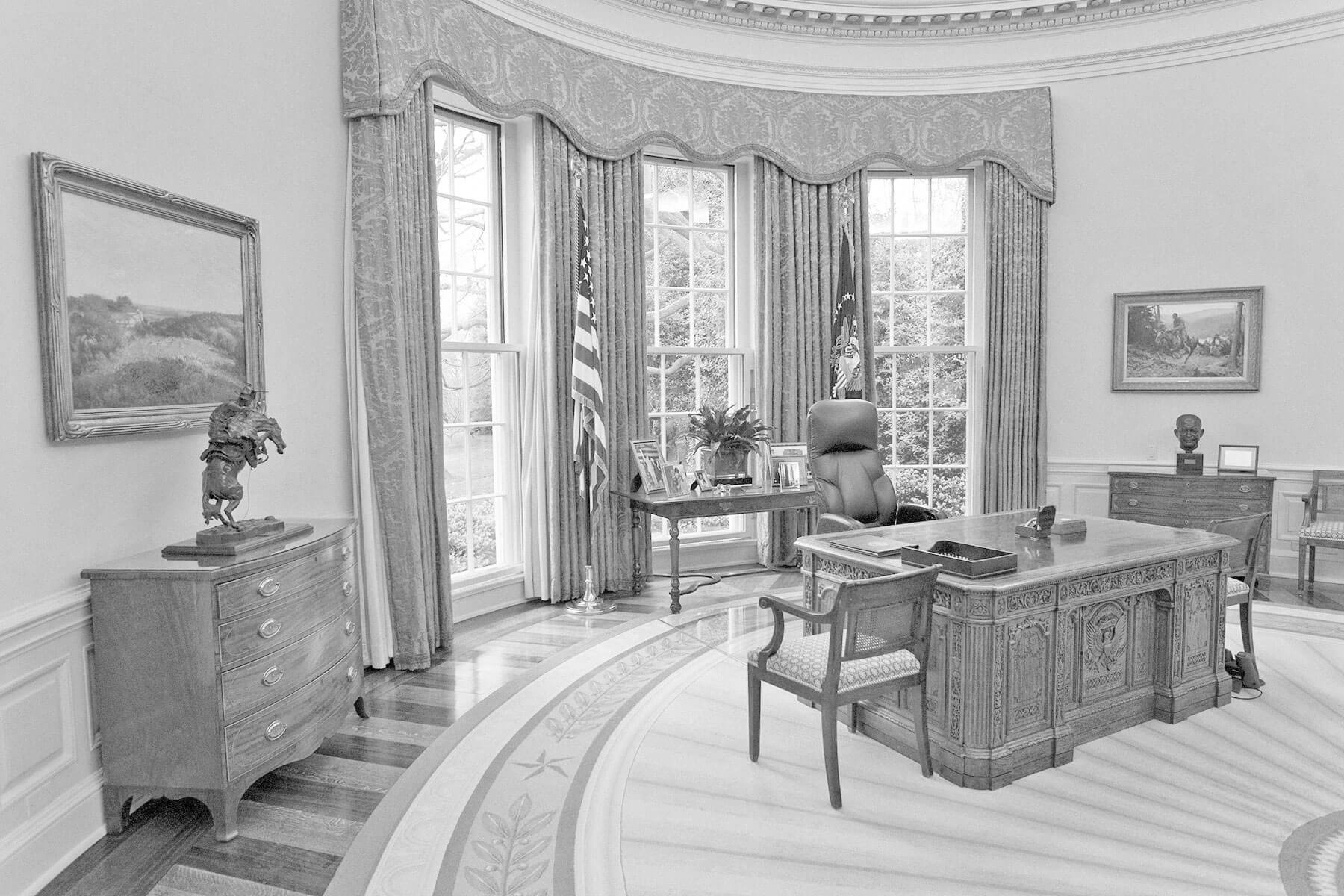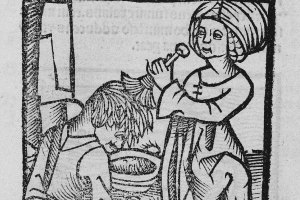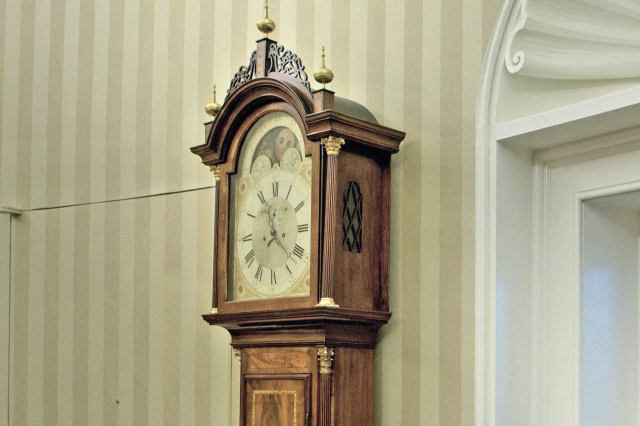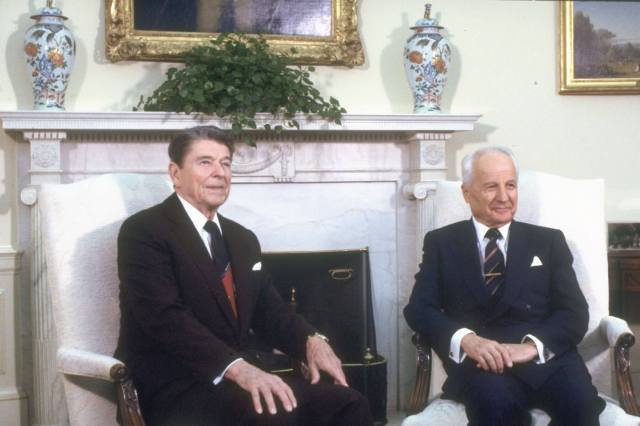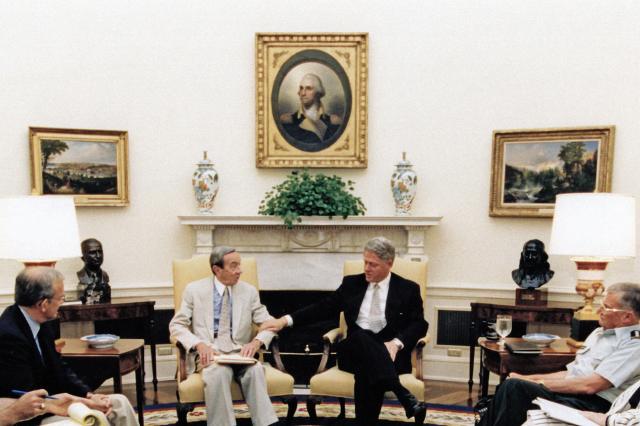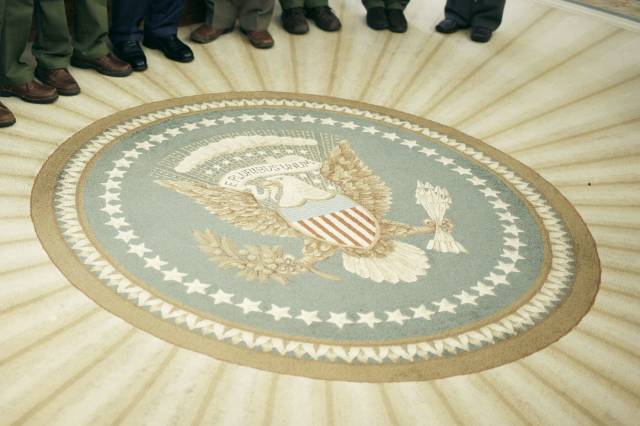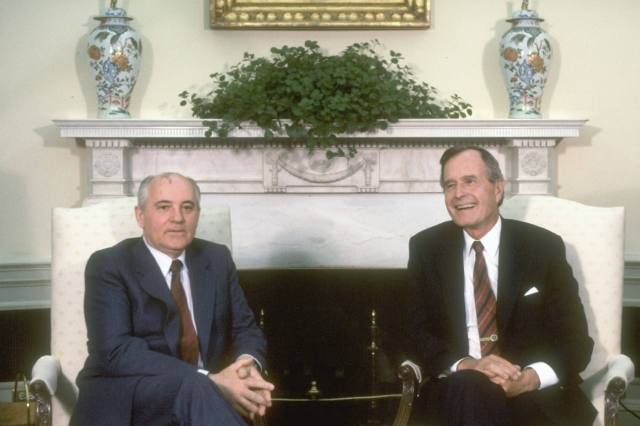A Historic Tour of the Oval Office
The workspace of the President of the United States — better known as the Oval Office — has undergone several changes over the last century or so. President William Howard Taft is credited for having the first Oval Office built in 1909, and in 1934, President Franklin D. Roosevelt constructed the modern office. Since then, while the overall layout and architectural features have remained relatively consistent, the color scheme, the paintings that adorn the walls, the furniture, and more have been changed to reflect the taste and, often, the ideals of each incoming President. Some items, such as the Resolute Desk, have found their way into the room more often than not, serving as a symbol of grandeur and authority. Here are seven pieces of Oval Office history that not only tell a story of their own, but also contribute to the larger narrative of American history.
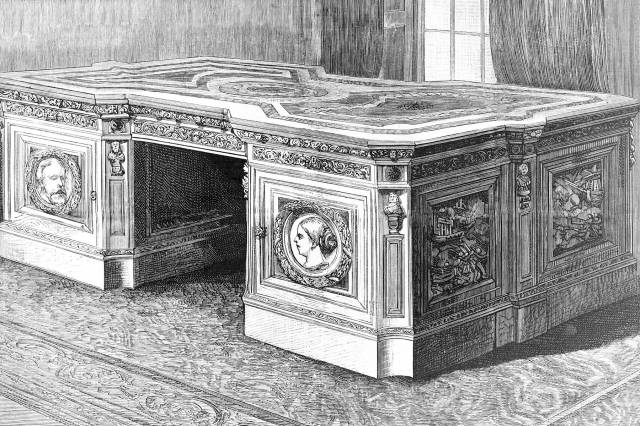
The Resolute Desk
The Resolute Desk is one of the most storied pieces in the Oval Office. Crafted from the oak and mahogany timbers of the HMS Resolute — a British ship abandoned in the Arctic in 1854 and later recovered by the United States — the desk was gifted to President Rutherford B. Hayes by Queen Victoria in 1880. Despite its significance, the desk wasn’t always used in the Oval Office — it lived instead in the President’s Office, the President’s Study, and even the broadcast room for TV and radio addresses. In 1961, First Lady Jacqueline Kennedy undertook a restoration and redecoration of the White House, and moved the ornate desk into the Oval Office; since then, all successive leaders except Presidents Lyndon B. Johnson, Richard Nixon, and Gerald Ford have used the Resolute Desk (though President George H.W. Bush used it for only part of his presidency). The artifact has had just two notable modifications since it was originally made: A hinged panel featuring the presidential coat of arms was added to the front in 1945, and a base was added to heighten the desk in 1961.





